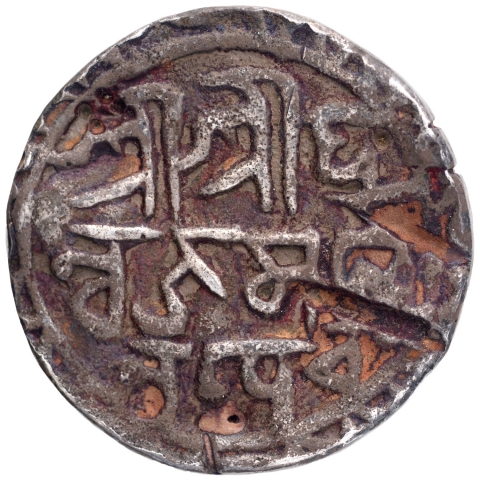This Lot is closed.
- P-Auction # 25
- Bids: 1
- Views:615
| Start Price 125000 | Estimated Price 125000-150000 |
| login, to view Hammer value | |
| Quick Description | ||||
|---|---|---|---|---|
| Denomination | Silver Tanka | Mint | Pandunagar | |
| Metal | Silver | Year (AH/VS/SE/AM) | SE 1339 | |
| Full Description: Bengal Sultanate, Danujamarddana Deva (Raja Ganesha) (Saka 1339-1340/AH 819-821/1416-1418 AD), Pandunagar (Pandua) Mint, Silver Tanka, SE 1339, Obv: Bengali legend "sri/sri/danuja/marddana/deva", Rev: Bengali legend "sri /chandi/ charana/parayana", 10.10g, 27.52mm, (G&G # B318), choice very fine, with usual test marks, Extremely Rare. In the year SE 1339 which corresponds to AH 819 and 1416 AD, Hindu ruler ‘Raja Ganesha’ sat on the throne of Bengal Sultanate. He established Hindu rule in Bengal and assumed the title ‘Danujamarddana Deva’. He took advantage of the weakness of the Ilyas Shahi dynasty, which ruled before him, to come to power. Some have argued against this identification of ‘Raja Ganesha’ as ‘Danujamarddana Deva’. Raja Ganesha was a Hindu landlord of Bhaturia in North Bengal. He came to serve in Ilyas’ court at the time of Ghiyas-ud-din Azam Shah. He continued to serve the succeeding Sultans of Bengal and later seized control over Bengal soon after the death of Sultan Bayazid. But the fact remains that this ruler was able to strike coins in Pandua(Firuzabad), Sunargaon and Chatgaon during his reign and thus had control of a large area of Bengal. The only person to be in that position to our knowledge is Raja Ganesha, and the dates fit. These coins are particularly notabale as the language and script on them is mediaeval Bengali and they are dated in the Saka era. | ||||


